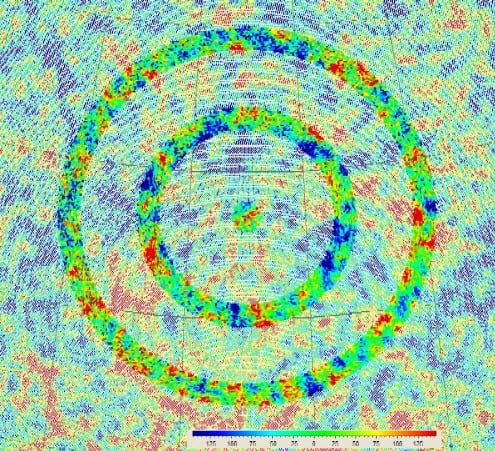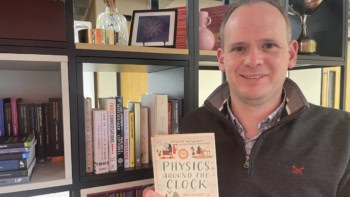
Do these concentric circles offer a glimpse of before the Big Bang?
By James Dacey
Roger Penrose is defending his claim that our universe did not begin with the Big Bang but instead continually cycles through a series of lifetimes, or “aeons”. He makes his latest case in a paper submitted to the arXiv preprint server yesterday.
The recent excitement began in November when Penrose, a University of Oxford physicist, made the sensational claim that he had glimpsed a signal originating from before the Big Bang. Working with Vahe Gurzadyn of the Yerevan Physics Institute in Armenia, Penrose came to this conclusion after analysing maps from the Wilkinson Anisotropy Probe (WMAP). These maps reveal the cosmic microwave background, believed to have been created just 300,000 years after the Big Bang and offering clues to the conditions at that time.
After scrutinizing over seven years’ worth of WMAP data, as well as data from the BOOMERanG balloon experiment in Antarctica, Penrose and Gurzadyn say they have identified a series of concentric circles within the data. These circles show regions in the microwave sky in which the range of the radiation’s temperature is markedly smaller than elsewhere. According to the researchers, the patterns correspond to gravitational waves formed by the collision of black holes in the aeon that preceded our own, and they published these claims in a paper submitted to arXiv.
The paper was quickly picked up by physicsworld.com and, in no time at all, the story was causing a big stir in the blogosphere. But not everybody agrees with Penrose’s outlandish claims and to date at least two other groups have published their own independent analyses of the same CMB data, and both have taken issue with the original conclusions. The first is a paper by Moss et al and the second is written by Wehus et al – both published on arXiv.
The disagreements are subtle – and I won’t pretend I fully understand them – but in essence both groups are saying that we should not be surprised by the circles, which can easily be explained by anisotropies in the CMB. The patterns, claims Wehus’ group, are fully consistent with the accepted inflationary model of cosmology: that the universe started from a point of infinite density, expanded extremely rapidly for about a second, and has continued to expand much more slowly ever since.
But not to just sit and sulk, Penrose and Gurzadyn have already hit back with a follow up paper, published yesterday on arXiv. In the short article, they agree that the presence of circles in the CMB does not contradict the standard model of cosmology. However, the existence of “concentric families” of circles, they argue, cannot be explained as a purely random effect given the pure Gaussian nature of their original analysis. “It is, however a clear prediction of conformal cyclic cosmology,” they write.
The battle, it seems, is set to go on.



